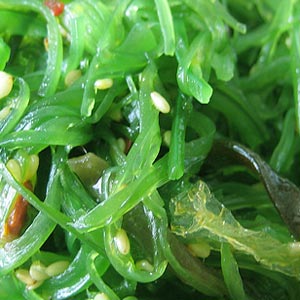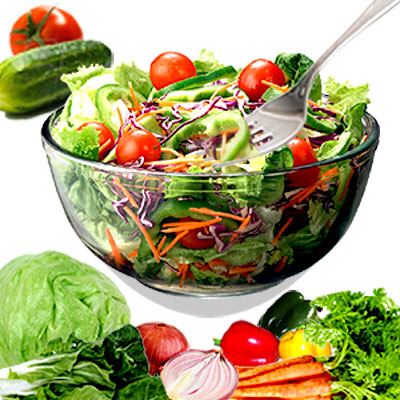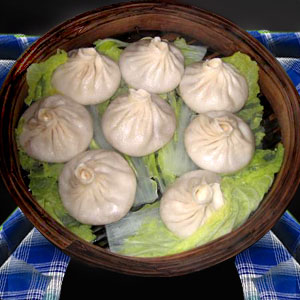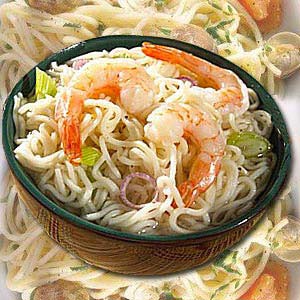Seaweed Nutrition

Seaweeds are sea plants inside the sea that are usually seen caught toward rocks, sand and dead plants of undersea. Some of the seaweeds are found on the surface of oceans or seas. Seaweeds can be large or tiny. They are divided largely into three types; named after the color they sport namely red, brown and/or green.
Edible seaweeds are algae and these can be eaten or used in food preparations. Some common seaweeds include Arame, Badderlocks, Bladderwrack, Carrengeen moss, Dulse, Gutweed, Hijiki, Irish moss, Laver, Kombu, Mozuku, Nori, Oarweed, Ogonori, Sea belt, Sea Grapes, Sea Lettuce, Spirulina, Thongweed and Wakame.
Coastal cuisine across the world use seaweeds extensively in food preparations. South East Asian countries like China, Japan and Korea are popular for using sea weeds since prehistoric times. Many European societies including France and Nova Scotia and Newfoundland consume seaweeds. While the marine algae seaweed is by and large non toxic, some do contain acids that can irritate the digestive canal.
Seaweed nutrition
A very significant factor about nutrients in seaweed is that unbelievably seaweeds contain neither roots nor blood vessels and they feed directly from the seawater through the plant cells surface.
Therefore, the seaweed is able to take full advantage of all the nutrients present in the sea without having to undergo any complex transformations. The micronutrients and electrolytes in seaweed are bio available in a form that human cells need to mesh with their metabolism. And more interestingly, the composition of human blood plasma or fluid surrounding the cell membranes is similar to that of seawater.
Seaweed extract is chelated and nutritious minerals are obtained. Three major nutritious components obtained through chelation included iron, magnesium and manganese.
Hence, seaweed or algae can help build and sustain the broad nutritional balance of vitamins, minerals and vital nutrients on which her optimum health and vitality is built. Sea weeds are low calorie foods and they exhibit a significant concentration of minerals, vitamins, proteins, carbohydrates and lipids.
A study reveals that seaweed contains 10 to 20 times the amount of minerals, trace elements and vitamins than found in commercially grown land vegetables. Outstanding nutritional profiles in seaweed include essential fatty acids, nucleic acids like RNA and DNA, and phyto chemicals as carotenoids.
Sea weeds health benefits
Seaweeds are used extensively in folk medicine in coastal zones. Knowledge of the tonic and healing powers of seaweed has been passed on among coastal people for generations together. Seaweed has been part of the traditional diet in countries like Japan and China, Hawaii, Wales, Scotland, Iceland and Ireland.
Seaweed is a rich dietary fiber and it is chemically and physically different from land plants. It induces different physiological effects. Research has established that many physical ailments in both humans and animals can be regularly resolved with the simple addition of seaweed in their diets.
Seaweed is a rich antioxidant, anti mutagen and anticoagulant. It helps in anti-tumor activity and plays a potential role in modification of lipid metabolism in the human body.
Regular inclusion of seaweed in your diet for long term can regulate metabolism and energy, stimulate the immune system, soothe the digestive tract and cleanse the blood, protect against bacterial and viral infection and maintain healthy cellular function.
Studies reveal that the Japanese who consume on an average about 8-12 mg of seaweed per person per day, suffer from lesser thyroid diseases than the US population which consumes much lesser seaweeds. Seaweed extract may help patients to treat lymphoma, an immune system cancer.
Again, the incidence of breast cancer in the US is the highest in the world, whereas Japan has the lowest breast cancer disease rate in the world and Parkinson's disease is usually not noticed in Japan. In Japan there is lower rate of heart failure, obesity, and higher healthy aging.
The brown seaweed extract known as 'Modifilan' has been used to achieve great health benefits such as improving the immune system, providing protection against cancer and thyroid. Seaweeds help remove toxicity from serious metals and other toxins and helps in losing weight.
Seaweeds help to slash the risk of diabetes and stroke while staving off age-related degeneration of brain and nervous system. By using the more complex salts present in seaweeds, you have less craving for simple junk food.
- Assisting the immune systems
- Increase blood circulation
- Enable tissue and organ regeneration
- Assist in longevity
- Support circulatory system
- Decrease the clotting ability of blood
- Reduce high blood sugar levels
- Maintain healthy levels of cholesterol
- Support proper joint function
- Eliminate harmful cells
- Aid in maintaining proper gastrointestinal function
- Maintain optimal kidney function
- Aid in low thyroid activity
Seaweed supplements
The good news is that kelp or seaweed in tablet form has been available for some time. And for those who feel that even this taste is hardly palatable, manufacturers are able to create a very palatable version with suspended gel technology.
Seaweed supplements work holistically, assisting body immune system, in healing process, having a positive effect on the human body including areas of diseases such as tuberculosis, heart disease, colds, and influenza, cancer, arthritis and thyroid problems. Seaweed and seaweed supplements aid in weight loss - reducing food cravings by creating a full feeling. Seaweed supplements have more than 50 minerals and trace elements such as iodine which are essential to regulate the thyroid gland.
Seaweed supplements come not only dried but also toasted and sugared and can be added in any drink or food items - as it does come in granulated forms or powdered forms. Seaweed supplements also come in capsules.
Seaweed salad recipes
Salted seaweed salad with lemon and freshly grated ginger
Salted seaweed (tosaka ao) or about loosely packed cups of any other seaweed 500 g
Fresh lemon juice 2 teaspoons
Salt ½ teaspoon
Sugar 1 teaspoon
Finely grated ginger ½ teaspoon
Japanese soy sauce 1 ½ teaspoon
Chinese or Japanese sesame oil 4 teaspoons
Sesame seeds, toasted until golden brown in a hot skillet 1 tablespoon
Rinse the seaweed in a large bowl in three or four changes of cold water in order to release the salt. Cover with water and set it aside to soak for about 10 minutes. Drain, and then thoroughly squeeze the seaweed between clean kitchen towels to remove all excess moisture. Return to a dry mixing bowl.
Prepare the dressing. Whisk the vinegar, lemon juice, salt and sugar together in a bowl until the crystals dissolve. Now add ginger, soy sauce, and sesame oil and whisk together. Toss the seaweed with most of the dressing and half of the sesame seeds. Add more dressing to suit your taste. Divide among six small salad bowls, sprinkle each portion of seaweed with the remaining sesame seeds and the seaweed salad recipe is ready to serve immediately.
Wakame seaweed salad recipe
Dashi 3 tablespoons
Soy sauce 1 tablespoon
Rice wine vinegar 3 tablespoons
Honey 1 tablespoon
Mirin 1 teaspoon
Wakame seaweed dried ½ oz
Cucumber seeded ½ cucumbers
Salt 1 teaspoon
In a small saucepan combine the dashi, soy sauce, rice vinegar, honey and mirin. Heat to dissolve the honey and mix the dressing well. Remove from heat and chill. Seed the cucumber with a spoon. Then cut the cuke into paper thin slices. Put the slices in a bowl of cold water to cover. Add salt. Soak for 20 minutes. The seaweed salad recipe of Wakame is ready to serve.
Cucumber and seaweed salad
Cucumber 2, sliced ¼ inch thick
Seaweed any variety chopped ¾ cup
Rice vinegar 1 tablespoon
Toasted sesame oil 1 teaspoon
Black sesame seeds 1 teaspoon
Scallion chopped fine 1
Mix cucumber, seaweed, vinegar and oil together. Top with sesame seeds and scallion. The appetizer seaweed salad is ready.
Tasty dried seaweed salad recipe
Dried Wakame, dried Arame, dried Hijiki seaweeds, Enoki mushrooms
Scallions
Cucumber
For marinade
Rice vinegar 1 tablespoon
Salt 1 teaspoon
Dressing:
Rice vinegar 4 tablespoon
Sesame oil 1 1/2 teaspoon
Soy sauce 1 tablespoon
Dashi stock 1 tablespoon
Soak the Wakame for about 10 minutes and the Arame and Hijiki for about 30 minutes. Cut the scallions into 4 cm long strips and soak them in cold water to make them curl up, then drain. Slice the cucumber into thin half-moon shapes. Cook the Wakame and Enoki in boiling water for 2 minutes, add the Arame and Hijiki seaweed for a few seconds and then remove them immediately. Drain and marinate with vinegar and salt, then chill in the refrigerator. Mix the dressing ingredients. Put everything in a large bowl and serve the dressing. The seaweed salad recipe is ready.
Seaweed recipes
Seaweed soup
Roasted seaweed 3 sheets
Broth 2 cup vegetarian or meat flavored with 1 cup water
Cilantro leaves fresh 3
Sesame oil 1 teaspoon
Ground black pepper to taste
Pour the broth mixture in a saucepan and bring to a boil. Break the seaweed sheets into pieces and add into the boiling water. Reduce the heat and cook for about 5 minutes until the seaweed expands and the soup starts to thicken. Add sesame oil. Remove the heat, pour the soup into a bowl and sprinkle cilantro as garnish. Serve hot.
Sesame has been used as food for a few thousand years and is known to provide high energy. It also helps to slow the aging process. It is a good partner for seaweed.
Egg and nori rolls
Soy sauce 3 tablespoon
Wasabi paste ½ teaspoon
Water ½ cup
Eggs 8
Pinch of salt
Butter 1 tablespoon
Sushi nori roasted seaweed 4 sheets
Carrot 1, peeled cut into thick matchsticks
Celery sticks 2, trimmed, cut into thick matchstick
Snow pea sprouts, stems trimmed 40 g
Whisk the soy sauce, wasabi and ¼ cup of water into a small bowl until well combined. Cover and set aside until serving. Crack the eggs into a large jug and add the remaining water. Add salt and use a fork to whisk until well combined. Heat 1 teaspoon of the butter in a 20 cm stick frying pan over medium high heat until foaming.
Pour a quarter of egg mixture into pan and tilt pan until mixture covers base. As omelet begins to set, lift edge so uncooked egg runs underneath. Cook, uncovered, for 2 minutes or until omelet is set. Slide onto a large plate and cover loosely with foil to keep warm. Repeat in 3 more batches with remaining butter and egg mixture. Place the omelets in a single layer on a clean surface. Top each with 1 nori sheet. Divide carrot, celery, and snow pea sprouts among nori sheets, placing down the center. Roll the omelet up tightly. Trim edges and cut the rolls in half. Arrange on a serving plate and serve with wasabi mixture.
Mermaid Pasta and veggies
Fresh shiitake mushrooms, soaked in warm water for 10 minutes 6
Medium sized pieces Wakame, soaked in warm water for 10 minutes
Fresh baby bok choy handful
Scallions, thickly sliced diagonally 3
Red bell pepper, cut into fine strips 1
Zucchini, cut into fine strips 1
Carrot, cut into fine strips 1
Noodles 12 oz
Dressing:
Cold pressed sesame oil 2 tablespoon
Tamari 3 tablespoon
Fresh lime juice 1 tablespoon
Local raw honey 1 teaspoon
Garlic cloves, minced 3
Fresh, black pepper to taste
Place noodles in a colander, rinse under warm water and drain well. When mushrooms and Wakame are soft, slice the mushrooms thin and chop the seaweed. Combine with bok choy, onions, bell pepper, zucchini and carrot. Drizzle dressing on top and toss lightly. Marinating the veggies overnight for several hours or overnight before eating improves taste.
Chazuke recipe - light Japanese rice dish, which is often made with leftover steamed rice
Steamed rice ¾ cups
Tsukudani Kombu 1 tablespoon
Green tea leaves or tea bags
Serve steamed rice in a rice bowl. If it is leftover rice, reheat the rice in the microwave. Place Tsukudani Kombu on top of the rice. Brew green tea in a tea pot. Pour hot green tea over rice.
Sushi Norimaki vinegar rice rolled in seaweed recipe
Toasted dried laver (nori) 4 large sheets
Vinegar rice 600 g
Fresh tuna 1 cup
Cucumber 1 cup
Pickled giant white radish strips 1 cup
Wasabi 1 teaspoon
Pickled ginger slices 20 g
Cut the raw fish in 4 strips of the same length as the nori. Cut the cucumber in quarters lengthwise and remove the seeds and cut into sticks. Cut the nori in half. Place the half nori sheets on a bamboo rolling mat, with the shiny side down. Top the nori with ½ a cup of sushi rice, spread evenly on the sheet leaving a border of 1 cm free on the inside of the sheet.
Take a little horseradish paste and spread it across the rice in the center. Place the tuna across the center of the horseradish and start to roll using the bamboo mat making sure that the nori sheet end goes under the rice. Roll the mat up firmly and squeeze gently. Remove the rolled sushi from the mat, cut in half and then into three pieces with a wet knife. Repeat the process with a filling of cucumber and again with a filling of pickled radish.
Top of the Page: Seaweed Nutrition
Tags:#seaweed #seaweed nutrition #seaweed health benefits #seaweed salad #seaweed recipes #seaweed supplements
 Food and Nutrition Facts
Food and Nutrition Facts Chamomile
Parsnip Soup
Dim Sum
Gazpacho Soup
Whole Grain Cereal
Jicama Nutrition
Bok Choy Stir Fry
Chia Seeds Benefits
Teff Nutrition
Kaniwa
Flax Seed
Wheatgrass Benefits
Kelp Benefits
Types of Chili Peppers
Medicinal Benefits of Pomegranate
Arugula Leaves
Maca Root
Pitaya Fruit
Benefits of Celery
Leek
Asparagus Benefits
Oyster Stew
Oyster Mushroom
Lupin Beans
Quinoa
Freekeh
Extra Virgin Olive Oil
Dill Pickle
Sauerkraut
Fat Burning Foods
Nutrition Chart
Food Combining
Calorie Counter
calories ...
Non Alcoholic Beverage
Punch Recipes
Food Label Nutrition
Homemade Sausages
Cooking Steak
Eating on a Budget
Budget Friendly Recipes
Quick Recipes
 Healthy Packed Lunch
Healthy Packed Lunch Overnight Oats Recipes
Eggplant Casserole
Brunch Recipes
Burrito Recipes
Muffin Recipes
Cupcake Frosting
Apple Crisp
Stir Fry Cooking
Seafood Salad Recipe
Cooking Corn on the Cob
Finger Food Recipe
Sandwich Recipe
Bread Stuffing Recipes
Easy Chili Recipes
Picnic Recipes
Edible Mushroom Recipes
Mushroom Soup Recipes
Dip Recipe
Tapas Recipe
Corned Beef Recipe
Canned Salmon Recipe
Tilapia Recipes
Crumb Cake
Flourless Chocolate Cake
Regional Food
 Lasagna Recipe
Lasagna Recipe Peruvian Ceviche
Chinese Food Recipe
Vietnamese Food Recipe
Malaysian Food
Korean Food Recipe
Indian Curry Recipe
Edible Rice Paper
Mexican Food Recipe
Quesadilla
Guacamole Dip
Italian Food Recipe
Spanish Food Recipe
Kosher Food
Falafel Recipe
Tandoori Chicken
Noodles
Canape
Couscous
Meatloaf
Chowder
Gumbo Recipe
Crockpot Recipes
Moroccan Food
Healthy Food
Pre Workout Snack
Matcha Tea
Simple food Swaps to Lose Weight
Foods to Beat Stress
Foods to beat Insomnia
Bone Density Foods
Prebiotic Foods
Kefir Grains
Agave Nectar
Spicy Trail Mix
Pesto Sauce
Homemade Hummus
Crab Cake Sauce
Bamboo Shoots Nutrition
Lemon Grass Plant
Butter Beans Recipes
Loose Green Tea
Seaweed Nutrition
Healthy Food
Low Fat Granola Bar
Steel Cut Oatmeal
Fruit Pizza
Pizza Toppings
Green Smoothie
Healthy Meal Planning
Delicious Mealtime Recipes
Heart Healthy Fats
Healthy Heart Recipe
Healthy Dinner Recipe
Healthy Dessert Recipe
Healthy Fast Food
Healthy Kid Recipe
Probiotic Food
Diabetic Friendly Foods
Fruit Salad Recipe
Bread Pudding
Tofu Recipe
Oat Bran
Broccoli Salad
Avocado Recipe
Iron Rich Food
Brain Foods
Antioxidant Food
Natural Diuretic
Low Fat Cooking Tips
Rice Pilaf Recipe
Low fat Chicken Recipe
Food Tips

Sous Vide Cooking Technique
Natural Sugar Substitute
Stevia Sugar Substitute
Sunflower Seeds Nutrition
Bouquet Garni
Cake Decorating Tips
High Satiety Foods
Thanksgiving Dinner
Safe Food Storage
Frozen Food Storage Tips
Cold Storage Food Tips
Leftover Recipe
Food Pyramid
Dairy Free Food
Microwave Cooking
Food Intolerance
Homemade Ice Cream
Apple Cider Vinegar
Benefits of Honey
Beverage Cooler
Food Poisoning Symptom
Food Allergy Symptom
Food Addiction
Top of the Page: Seaweed Nutrition
Popularity Index: 101,527

